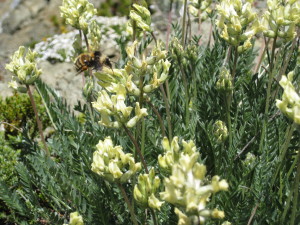Drug use is a fairly common, oftentimes problematic issue among humans. However, Homo sapiens isn’t the only species that likes to experiment with mind-altering substances. In the animal world, many species use questionable substances to get a little buzz.
1. Dolphins pass the puffer (fish)
Dolphins are some of the world’s most intelligent creatures and demonstrate cognitive abilities comparable to those of humans. They socialize, solve complicated puzzles, and…enjoy getting high? Here’s the real kicker: they torment innocent fish to do so. In the wild, dolphins have been seen harassing pufferfish — those spiky, angry-looking, balloon-like creatures — to get high.
Why pick on pufferfish? The answer lies in the pufferfish’s self defense mechanism. When threatened, pufferfish excrete an incredibly deadly neurotoxin, tetrodotoxin (TTX), which stops electrical signaling in brain cells. TTX is at least 100 times more potent than cyanide. It’s why fugu, or pufferfish meat, is so risky to eat if not prepared properly.

However, in smaller doses, TTX is a mild narcotic — a fact which dolphins have figured out. These inquisitive mammals will chase and gently push around a poor pufferfish to rile it up, forcing it to excrete a cloud of TTX in self-defense. After ingesting or absorbing some of the TTX, the dolphins roll onto their backs and close their eyes, or stare up at the water’s surface to gaze at their reflections. The dolphins even “puff, puff, pass” the fish around to their pod-mates.
Luckily, the encounter ends well for all creatures involved: the dolphins get their fix, and the mildly traumatized pufferfish can swim away unharmed.
2. Horses go loco for locoweed
Locoweed is an aptly-named plant. It gets its name from the Spanish word for “crazy,” due to its mind-altering properties. Because it blooms in the western United States, locoweed is a potential snack for livestock herds, especially horses. During the early fall and late spring, a time when all other plant material is brown, locoweed is an appealing green color. As such, hungry horses will happily graze on locoweed if they are not kept in check.

Sadly, this is an example of animal drug use gone wrong. Locoweed is neurotoxic, and high doses (150 mg for a 1000 pound horse) can produce negative effects. Specifically, the plant produces a chemical called swainsonine, which stops the production of enzymes that break down sugars. This causes a toxic build-up of sugar in cells. Horses that eat locoweed become depressed, lethargic, lose weight, and develop behavioral issues. Farmers have to patrol their fields to ensure that horses don’t get into locoweed patches.
3. Buzzed bees
The ancient Greek word for “drunk,” methysménos, translates to “honey-intoxicated.” Appropriately, the honey bee also likes to get a little buzzed. In the wild, bees consume sugary plant byproducts, like fruit and tree sap. However, if these sugary treats stay out in the sun for too long, the sugars begin to ferment, creating alcohol. Much like us humans on a Friday night, bees drink this alcohol-infused nectar and demonstrate the stereotypical “drunken” behavior: staggering, lying on their back, and flying around erratically.
However, the bees at the hive have no tolerance for those members flying under the influence. Sometimes, when a drunken bee returns home, it is dismembered by its sober hive-mates. It’s an extreme version of calling someone out for being a drunken idiot.
Like humans, honey bees are social creatures, which makes them a surprisingly good model to study alcohol’s effect on social behavior. Researchers at Ohio State University have observed how normal bee behavior — walking, flying, and grooming — is affected by alcohol. Not surprisingly, the bees who had consumed the most alcohol stopped performing normal bee behavior and instead spent their time laying on their backs. Now, the researchers want to examine alcohol’s effects on aggressive social behavior. Considering the hive’s response to drunkard bees, it may be a brutal study.
4. Catnip, the cat’s meow
Catnip is perhaps the most famous example of drug use in the animal kingdom. This substance can be found in most cat owner’s homes. Anyone who has given a cat catnip knows the amusing and adorable side effects it produces: rolling on the floor, nuzzling, purring, and sometimes even drooling! Most felines, from house cats to leopards to lynxes, react in this way to catnip. Sadly, 33% of domestic cats are not affected by catnip, as susceptibility is a genetic trait.

Catnip, or nepeta cataria, is a plant in the mint family that contains a feline attractant called nepetalactone. When sniffed, nepetalactone binds to receptors in the cat’s nose. This allows the chemical to be absorbed fairly quickly, which is why catnip’s effects seem to come on rapidly. Nepetalactone stimulates sensory neurons that project to “pleasure” centers in the cat brain.
Interestingly, humans can brew catnip into a tea, chew it, or even smoke it. But, the effect of the ‘nip is negligible — at most, it is as relaxing as a cup of chamomile tea.
It just goes to show that no matter the species, animals will consume mind-altering substances. A warning for the curious human reader: don’t try any of this at home (except perhaps some catnip tea).